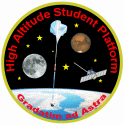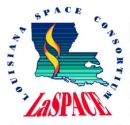



Payload 03 Information
Payload Flight Number:
Institution:
Payload Title:
HIDRA: High Altitude Data Relay Antenna
Student Leader:
Faculty Advisor:
Payload class:
SMALL
Payload ID Number:
03
Mass:
1.2kg
Current:
184mA
Serial Downlink:
NO
Analog Downlink:
NO
Serial Commands:
NO
Discrete Commands:
NO
Payload Specification & Integration Plan
Due:
Delivered:
Payload Integration Certification
Scheduled:
Actual:
Flight Operation Plan
Due:
Delivered:
Final Flight / Science Report
Due:
Delivered:
Abstract:
The High-altitude Inflatable Data Relay Antenna (HIDRA) will be using a high-altitude balloon to collect data using an atmospheric sensing suite and then relay that data using an inflatable antenna as a technology demonstration in a space-like environment. The team will create a vertical profile of [CO2], temperature and air pressure. Then, using a FLIR camera, the team will collect data on urban heat islands and rural areas. Once the data are collected, it will be transmitted via the patch antenna as well as an inflatable antenna designed and constructed by the team. Once received, the data will be compared against each other to determine if an inflatable antenna can transmit data at the same data rate and quality as a traditional patch antenna. The science team will look at atmospheric [CO2] and any urban heat islands to see if there is a correlation between the two. The team will also compare collected data to previous studies to ensure congruency and accuracy of data. Once complete, it will be possible to determine if [CO2] affect urban heat islands and if an inflatable antenna is in fact a viable replacement for standard patch or mechanical antennas. |